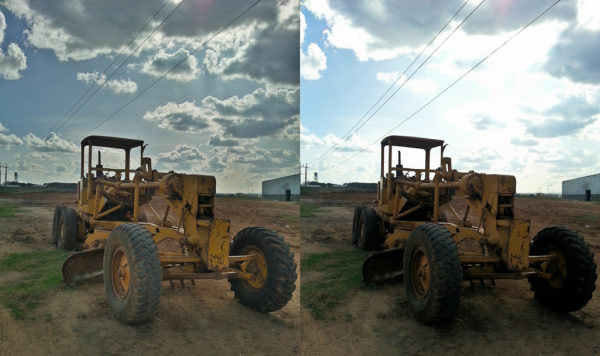HDR10+ – Everything You Need Know
Videos recorded on the Galaxy S10 range can be shot in HDR10+.
But what is HDR?
HDR stands for High Dynamic Range and this term is used across a variety of features for TV and video devices, including smartphones.
This format originated with stills photography. Photos captured at different exposure levels are merged into one. This helps improve the dynamic range of your photos by taking the best exposed parts from different photos to create one complete photo.
For example, a portrait picture outside might have the sky washed out or the person’s face in deep shadow. With HDR, 2 photos can be merged. So the correctly exposed sky is taken from one photo and the correctly exposed face from the other.
In essence, an image using this format will be somewhat closer to how your eyes see it, rather than how your camera sees it.
HDR for Displays
On enabled TV and smartphones screens, the display is able to show a much broader range of colours, highlights and lowlights. The colour range on a HDR10+ display is 36% more than Standard Dynamic range (and closer to the human eye). With HDR enabled displays and (importantly) HDR enabled content, you get brighter colours, blacker blacks and whiter whites.
HDR10 is a format that content creators can use to include metadata into their video content. The metadata in the HDR10 video has information telling the display how to show the HDR content.
So you see, HDR10 video and displays work together to add dynamic range to the image. However, one cannot work without the other.
HDR10 provides the data but only at the very start, so the whole video file will display with the same values throughout.
HDR10+
With this format dynamic metadata is recorded for every individual frame of the video file.
Content produced and certified as HDR10+ will have more accurate colour depiction than it does on any non-HDR10+ enabled display, including TVs and smartphone screens.
Samsung S10 range
As far as I can tell from a quick search, Samsung are the only phone makers to include the ability to shoot HD10+ footage with their phones. And this comes included with the new S10 range.
“Amazon Prime video and Youtube are content producers that regularly distribute videos in the HDR10+ format – but it’s an open format, so the availability of HDR10+ content will continue to grow!” Samsung
How to Enable HDR10+ Video Recording on GALAXY S10 & S10 PLUS
- Open Camera App
- In camera app on top left corner go to Settings
- Now you will see Advanced Recording Options
- Now the second option is HDR10+ video
- Tab to enable it.
HDR10+ vs Dolby Vision
There’s something of a HDR format war between HDR10+ and Dolby Vision. So what’s the difference?
First, HDR10 is free and open-standard meaning that TV manufacturers and content creators don’t need to pay for it. Dolby Vision is propriety of Dolby and you need to pay them to use it.
Why would you pay for Dolby Vision?
This format is capable of displaying 12-bit color depth (68.7 billion colours) whereas HDR10 is limited to 10-bit (1.07 billion colours).
However, there are currently no 12-bit TVs nor such content available. So Dolby Vision downsamples its colour depth to 10-bit which provides a subtle improvement over the native 10-bit colour.
Dolby Vision provides metadata for every frame, which gave it the edge over HDR10. But with HDR10+, it no longer has that advantage.
Because it’s free, HDR10/+ has the lead when it comes to content availability. There are also more TVs that support HDR10 than Dolby Vision.
The HDR10+ Alliance
Initially, only Samsung supported this format. At this point Dolby Vision had the lead.
However, after the HDR10+ alliance was formed by Samsung, Panasonic and 20th Century Fox, the battle has evened out. Recently, Warner Bros has become a content partner, making it one of the prime options.
Read next: The Official Smartphone Filmmaking KIT LIST.
Eager to learn more?
Join our weekly newsletter featuring inspiring stories, no-budget filmmaking tips and comprehensive equipment reviews to help you turn your film projects into reality!
Simon Horrocks
Simon Horrocks is a screenwriter & filmmaker. His debut feature THIRD CONTACT was shot on a consumer camcorder and premiered at the BFI IMAX in 2013. His shot-on-smartphones sci-fi series SILENT EYE featured on Amazon Prime. He now runs a popular Patreon page which offers online courses for beginners, customised tips and more: www.patreon.com/SilentEye


